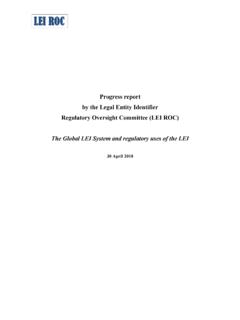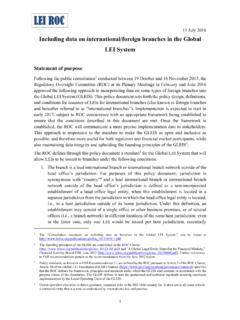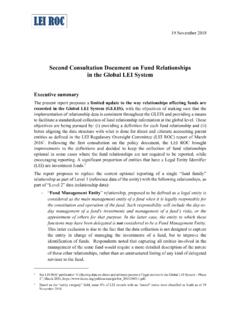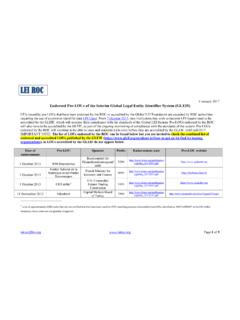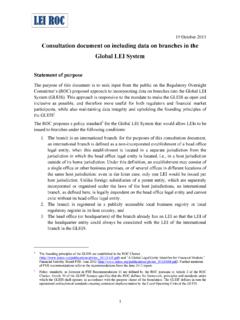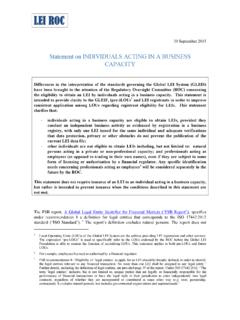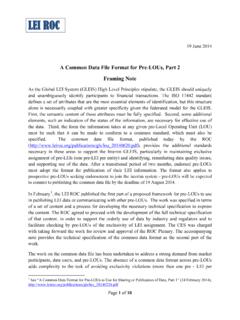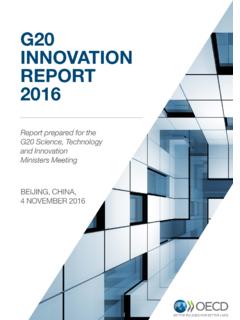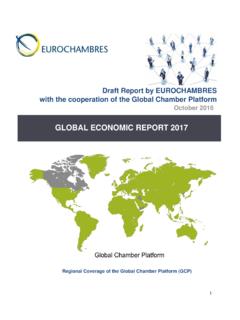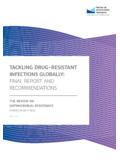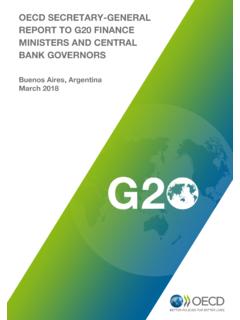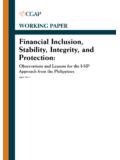Transcription of Progress report by the Legal Entity Identifier …
1 LEI ROC Progress report by the Legal Entity Identifier regulatory oversight Committee (LEI ROC) The Global LEI System and regulatory uses of the LEI 5 November 2015 2 Executive Summary The G-20 Leaders supported in 2011 "the creation of a global Legal Entity Identifier (LEI) which uniquely identifies parties to financial transactions and, following recommendations by the Financial Stability Board (FSB), tasked the LEI regulatory oversight Committee (ROC), established in January 2013, with coordinating the actions of the regulatory community in establishing and overseeing a Global LEI System in charge of issuing and maintaining LEIs, in accordance with the principles endorsed by the G20.
2 In October 2013, the LEI ROC started endorsing issuers of LEIs that could be used for reporting and other regulatory purposes in the various jurisdictions represented in the ROC. As of October 2015, the ROC had endorsed 27 issuers that have issued over 390 000 LEIs to entities in 195 jurisdictions. On 7 October 2015, the ROC confirmed that the Global LEI Foundation (GLEIF), established in June 2014 by the FSB as a not-for-profit organization overseen by the ROC as foreseen in the GLEIF Statutes, was ready to fully assume the tasks of the central operating unit of the system.
3 These tasks had so far been largely assumed, on an interim basis, by the ROC and its members. The GLEIF functions are now supported by a Master Agreement, to be signed between the GLEIF and issuers, which defines how the GLEIF will proceed to their accreditation and monitor their compliance with quality requirements and service levels. The GLEIF had already been publishing a consolidated data base of LEIs since end March 2015. In parallel, authorities in jurisdictions represented on the ROC have adopted at least 48 regulatory actions using the LEI, which are described in this report .
4 These uses of the LEI contribute to many G20 objectives, in line with the intention expressed by the G20 that the LEI should support authorities and market participants in identifying and managing financial risks. Examples of LEI uses already adopted in one or more jurisdictions include: identifying, in regulatory reporting, the parties to OTC derivatives contracts and, increasingly, other securities transactions, as well as the various institutions involved in processing these transactions, thereby facilitating, among other benefits, the aggregation of data relating to the same Entity .
5 Enhancing, especially in a cross-border context or across sectors, the comparability of data reported by banks, insurance companies and other financial institutions, for instance concerning the identification of their parent entities, their subsidiaries, or their investments or exposures to third parties; supporting more granular disclosures of assets held in securitised products and the ability of investors to conduct more cost effectively their own analysis on these assets. Standard setters of the financial sector and other international bodies have also encouraged other uses of the LEI, for the consideration of regulators or industry participants, such as managing customer relationships by banks, including correspondent banking relationships, facilitating the monitoring of transactions by Legal entities to prevent money laundering and the financing of terrorism; or improving statistics on the cross-border exposures of non-bank corporations.
6 The ROC has initiated a number of actions this year to support further uses of the LEI, including the collection in the Global LEI System of information on the parents of Legal 3 entities from 2016, which will for instance support enhanced data aggregation capabilities, and expanding or clarifying the eligibility of entities for an LEI, to better cover the population of Legal entities subject to financial regulation. This includes a public consultation on extending the LEI to branches located in a different jurisdiction than their head office, as these may be treated as distinct entities for regulatory or tax purposes.
7 As stated by the FSB in its last overview report to G20 Leaders, progressing towards adoption of the LEI by Legal entities worldwide is essential to fully reap the collective benefits of this innovation. To this end, jurisdictions can consider several strategies: Continue to increase the number of rules and regulations requiring the LEI, covering progressively a wider range of entities in more and more jurisdictions. This will in turn increase the benefits from the network effect of LEI coverage, and contribute to reduce the unitary cost of the LEI, thus paving the way for larger scale uses of the LEI.
8 Adopt the LEI as a universal Identifier , for instance by jurisdictions seeking to overcome the existence of several domestic identifiers covering different types of entities, benefit from an internationally recognised Identifier or leverage on the infrastructure developed by the Global LEI System. The current fee structure may be adapted to recognise the contribution of these jurisdictions to expanding the LEI and to reducing the costs for all users thanks to greater economies of scale. Incentivise voluntary adoption of the LEI, for instance by offering to report the LEI instead of providing the data that can be found in the Global LEI System, thus reducing duplicative reporting, or by requesting that the LEI be systematically reported to them or disclosed to market participants, when the Entity subject to reporting or disclosure has an LEI.
9 International standard setting bodies can help develop such strategies and support information exchange, as there are merits in the various authorities considering the actions of others when assessing the costs and benefits of the LEI. Assessing a measure in isolation from other domestic or foreign rules also requiring the use of LEIs and covering some of the same population of Legal entities could lead to an overestimate of the cost of the LEI coverage needed to implement a given use of the LEI. Market participants also have an active role to play, by voluntarily adopting the LEI, and encouraging their counterparties to do so.
10 To make sure the system better meets their needs, the GLEIF is interacting with industry users, introducing a quality monitoring programme and developing tools such as better mapping with national or sectoral identifiers . The broad approaches described above are not mutually exclusive or limitative and can be combined or used in succession. They are meant to assist jurisdictions and standard setters to develop the strategy that will best meet their needs, taking into account the differences in the Legal and regulatory frameworks in which they are operating, the mandates and objectives governing their actions, as well as the structures and economic conditions of the different jurisdictions, markets and sectors where the LEI can be used.

